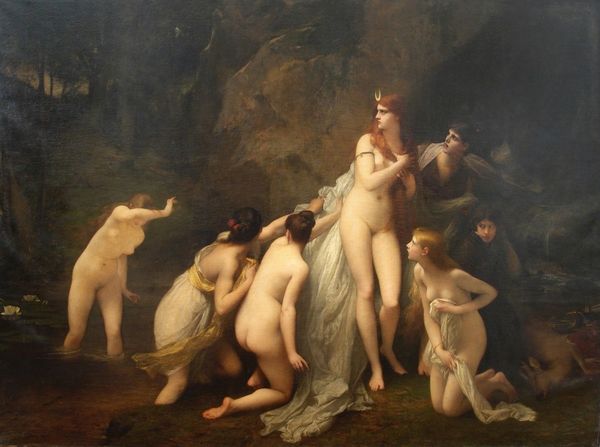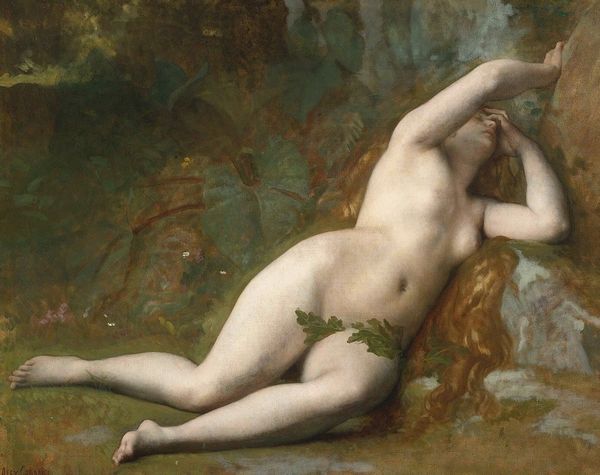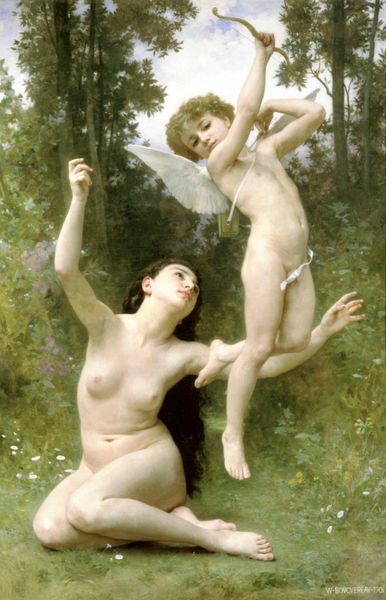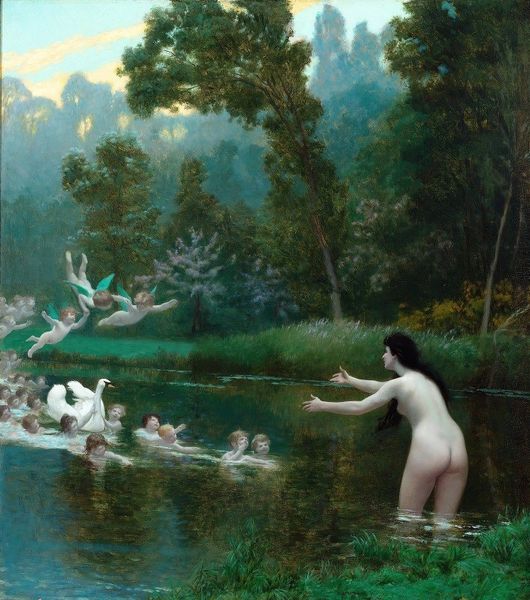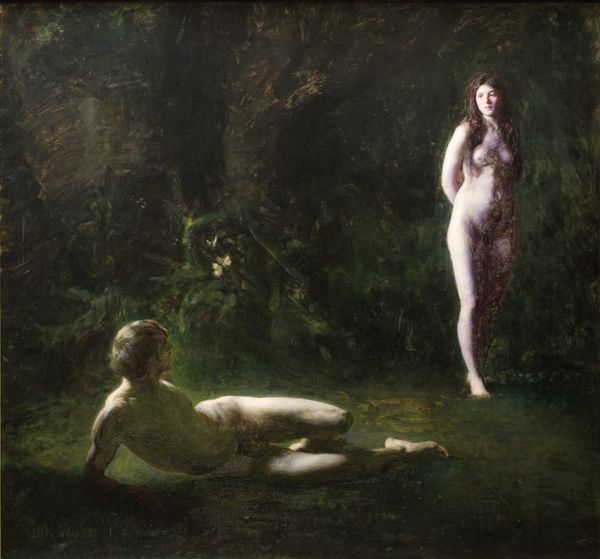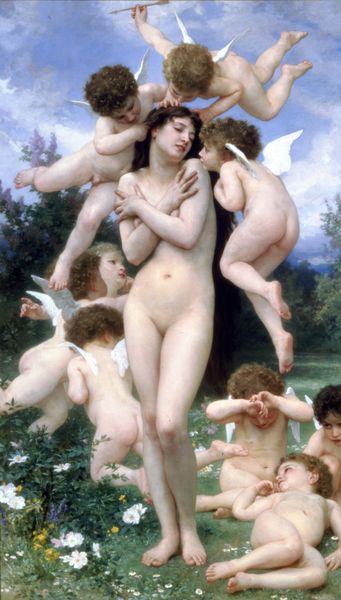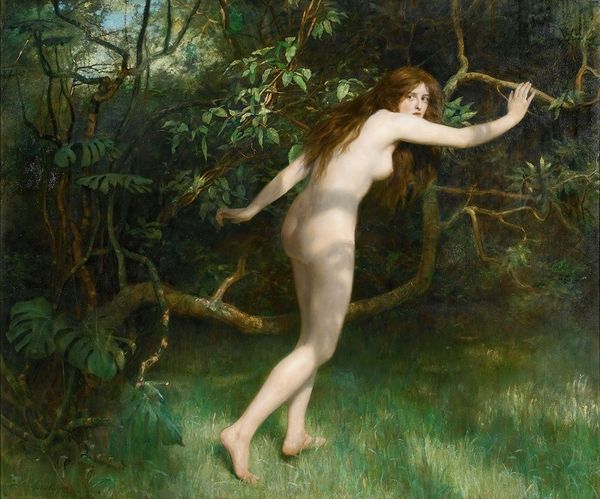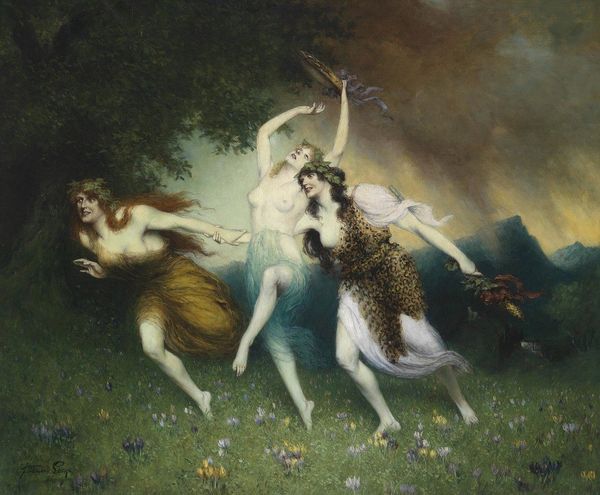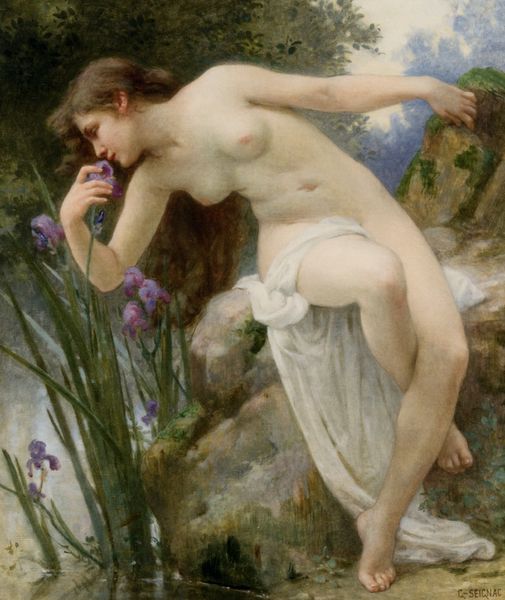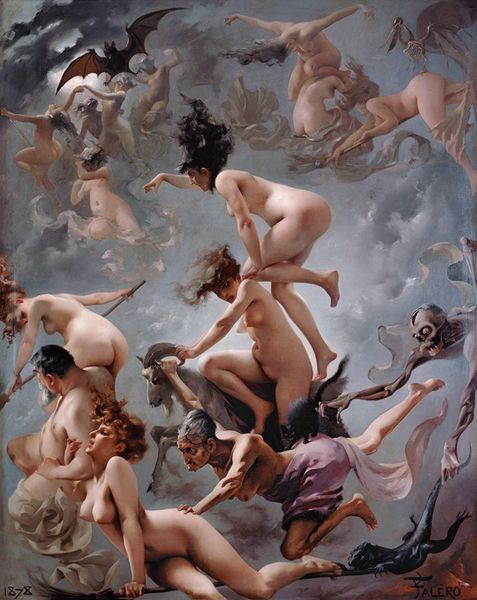
Copyright: Public Domain: Artvee
William Bouguereau painted ‘Nymphaeum’ to align with the tastes of the 19th century French Salon. It depicts a group of nude nymphs, or nature goddesses, frolicking in a forest pool, while a voyeuristic satyr peeps from behind the bushes. Bouguereau's academic style often romanticized and idealized his subjects. The whiteness of the nymphs is not just a representation of classical beauty, but also a reflection of the racial and cultural biases prevalent during European colonialism, reinforcing a hierarchy of beauty. The female nude was a respected subject within the Academy, but it was expected to be rendered within certain moralistic parameters. By setting the scene in the ancient world, and presenting the women as goddesses, Bouguereau justified what could have been seen as an erotic tableau. The furtive presence of the satyr introduces a frisson of danger and male desire. The painting is a complex interplay of desire, voyeurism, and idealization, reflecting the complex social mores of its time. It speaks to the male gaze and the limited agency afforded to women in the 19th century.
Comments
No comments
Be the first to comment and join the conversation on the ultimate creative platform.
